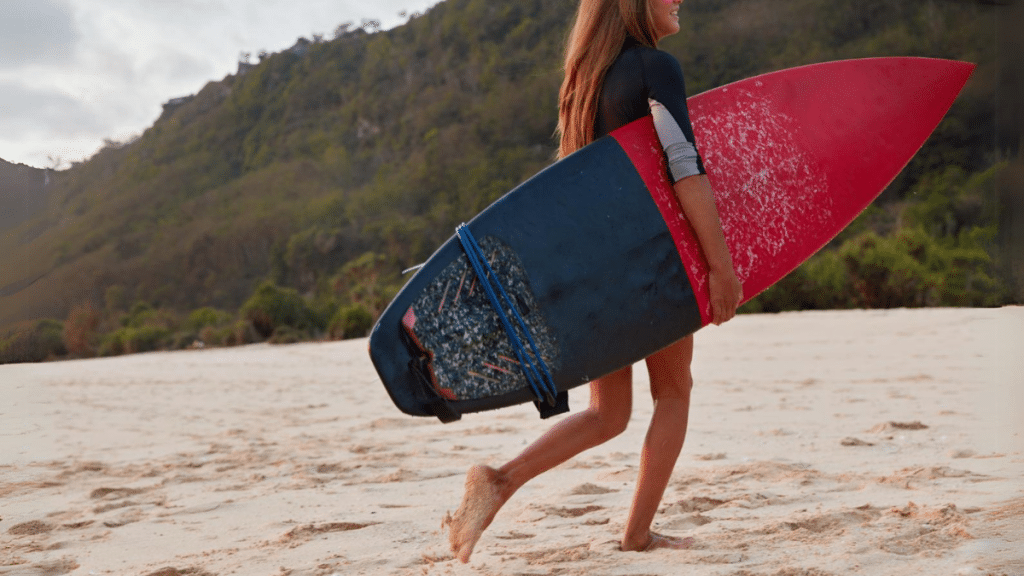Getting Your Surf Legs: 8 Tips for New Surfers
Nearly 4 million Americans consider themselves surfers. They might not live on or even near the beach, but they routinely seek out waves near and far. And the sport is growing as equipment improves and some of the world’s finest surfing beaches open up to outsiders.
However, surfing is by no means an “easy” hobby. Even super-experienced surfers like Internet entrepreneur Sky Dayton can find themselves out of their depth in new, unfamiliar places.
“The surf in Indonesia was at a totally different level from anything I’d ridden before,” says Dayton, discussing his first trip to that country’s famed Mentawais nearly 20 years ago. “From the first day, I really had to step it up…but by the last day, I was finally getting a handle on the place.”
Translation: Learning to surf is a lifelong journey. At the same time, surfers can overcome their early uncertainty with practice, poise, and good vibes, regardless of their experience level.
And so can you, even if you’re just starting out. Here’s what you need to know to gain confidence and experience as a new(ish) surfer, all while staying safe on the waves.
1. Start Small (And Calm)
As a beginning surfer, your top priority should be not to get over your skis — or board, in this case. Surf only in conditions you’re comfortable with, and pay close attention to what more experienced surfers tell you about them.
In fact, it’s best not to tempt yourself. Stick to beaches or regions known to be beginner-friendly. There’s plenty of fun to be had on more protected bodies of water, like the Great Lakes and the Gulf of Mexico, before graduating to gnarlier areas.
2. Pay Attention to Official Warnings (And Learn to “Read the Waves”)
You probably know not to hit the waves during a red flag warning. Only the most daring surfers ignore serious hazards, and it’s not recommended no matter how experienced you are (or think you are).
But less extreme conditions can be dangerous, too. For example, if you see a small craft advisory posted in the area, you can bet that the surf is going to be rough, even if the beach is open for business.
No warning at all? It’s still a good idea to know how to “read the waves,” looking for clues that things might be dicier than they appear. When in doubt, turn to a more experienced buddy (or group) for guidance.
3. There’s Safety in Numbers
Learning to surf is always more fun with friends. If you don’t have anyone in your social circle who’s interested in learning, the next best thing is to take a surf class, or better yet join a surf school.
In a “classroom” setting, you’ll have access to an experienced instructor (or several) who can guide you through the basics and help you stay safe on the water. In a group, it’s also easier to avoid becoming a UFO, or “unidentified floating object,” which raises your risk of an accident.
4. Know How to Fall (Because It’s Gonna Happen)
When it comes to falling out in the water, remember “PYH”: Protect Your Head. Always cover or shield your head upon losing control, and be sure to fall flat instead of leading with your head. It might sting, but it’ll also make you less likely to strike a shallow, submerged object you can’t see below the water.
5. Dress Appropriately
The idea of surfing in nothing but a pair of board shorts is appealing. It’s also probably not the best choice for beginners. Depending on water conditions and temperature, you may need a wetsuit to keep you warm for long periods out on the waves. In really cold water, you’ll want a drysuit, although beginners really shouldn’t surf in places where that’s recommended.
Regardless of the water temperature, you’ll also want a rashguard, which is basically a snug-fitting shirt that protects you from water impacts.
6. Guard Against “Surfer’s Ear”
“Surfer’s ear” is a painful condition caused by the expansion of the tiny bones of the inner ear in cold water. It’s a common affliction for serious surfers and beginners alike.
Fortunately, special earplugs can reduce the symptoms of surfer’s ear and help you focus on the task at hand.
7. Choose Your Board Wisely
The bigger, the better, at least when you’re a beginner. Bigger, flatter boards are easier to control in the waves when you’re still getting your surf legs under you.
So, choose a board with plenty of surface area to start. If you’re not sure you want it to be your “forever board,” consider renting it (perhaps as part of a lesson package) until you’re ready to commit.
8. Know the Rules of the Water
Finally, get up to speed on surfing etiquette and safety protocols. The big ones include watching out for others at all times, waiting your turn to drop in on a wave, clearly communicating to other surfers when you’re about to drop in, and never, ever “snaking” across another surfer’s path.
Surfing Is a Journey
If it’s not already clear, surf safety is not to be taken lightly. The right attitude, awareness, and equipment make all the difference out on the water.
Equally important for newer surfers to understand is that surfing is not a hobby that you can take from zero to sixty right away. It’s better to approach it as a pleasant journey — one that, if you take it seriously and do your part, you can stay on for the rest of your life.
